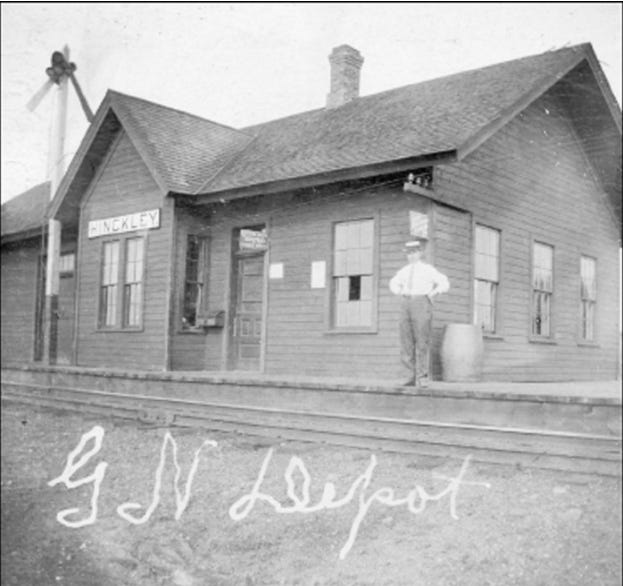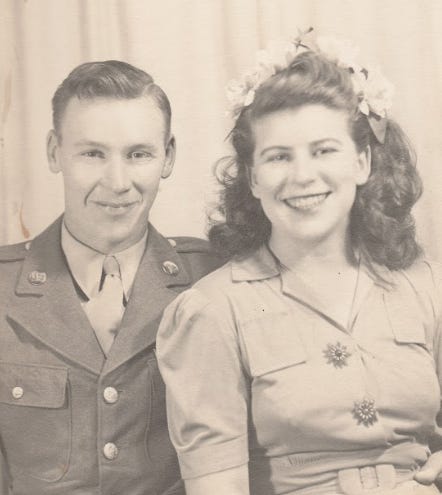Out on the Town: Dating in a 1940s Midwestern Town
I'm a romantic... let's discuss the places my ancestors fell in love.
Let me introduce you to a word you might not have heard before: Beanery. As in, “Want to grab lunch at ‘The Beanery’ later?” To some, it might evoke thoughts of fragrant coffee beans and sipping cappuccinos. To others, it might remind you of, well, beans. The truth is somewhere in the middle (…but yes, it does involve actual beans.)
Legend has it that my grandparents had their first date around 1942 or 1943 at “The Beanery:” a lunch spot located in the second Hinckley Depot, (the original was destroyed in the fire of 1894. Its replacement was quickly built in 1895.) The restaurant was nicknamed for the main food served to its patrons: a bowl of hot, baked beans. A former waitress recalled the beans were “baked in a large crock with the skin of a ham covering them.”1

Now, I know what you’re thinking: A steaming bowl of beans equals romance? Alas, I don’t think my grandparents exchanged flirtatious glances over a plate of ham-baked pintos. Beans were a cheap, filling food in the early 1900s, and hungry rail passengers needed something quick to eat. By the 1940s, though, the restaurant likely offered typical diner fare, like coffee, pie, and sandwiches. I’m willing to bet my grandparents had coffee and a nice slice of apple pie on their first date (but beans would have made a great story.)
Today, the former Depot is the Hinckley Fire Museum, available for touring during the summer. The Beanery was in the large room at the north end of the building, now full of exhibits on the 1894 blaze. If you examine the original hardwood floors, you can see the outline of where the long counters once sat, and even some rivet holes.
Dancing at Happy’s
Another hang-out for the early youth of my hometown featured a bit more excitement than beans. Happy’s Dance Pavilion was located north of Hinckley as early as 1935. A quick Google search of “Hinckley + Happy’s” shows multiple couples met in the dance hall (as mentioned in obituaries of multiple locals born between 1920-1935. I love that the dance hall, of which there is little remaining evidence of its existence, set up so many couples!)
Unfortunately, no photos of Happy’s seem to be available online. It seems to have had an almost 30-year run as a dance hall, and locals still reminisce fondly about their times there. Family lore says that my Grandpa first saw my Grandma at a Happy’s dance. He knew of her older siblings, but didn’t know there was another daughter (and one as pretty as she was, I’m sure he was thinking. (Pardon my literary liberties, but it’s my Substack post, so I’m going to hype up my grandma). Perhaps he asked her out at one of the dances. And once they shared a meal at the Beanery, they certainly attended later dances together at Happy’s Dance Pavilion.
If any locals are reading this, I’d love to hear from you- do you have memories of the Beanery or Happy’s? Did your grandparents meet at a dance, or share a slice of pie at the Depot’s restaurant? Comment below or shoot me a message! In the meantime, thanks for reading my little ode to small-town date spots.
Alaina Wolter Lyseth, Images of America: Hinckley and the Fire of 1894.








